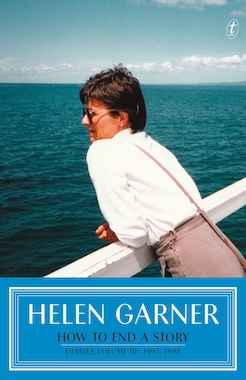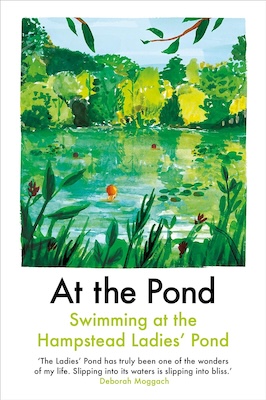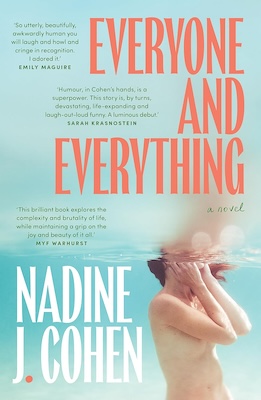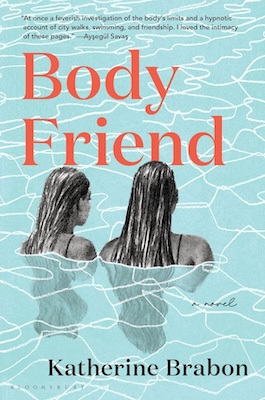When I meet a fellow swimmer, there’s a kind of knowing connection. We have our favorite pools, we’re morning or evening swimmers, we started swimming at a particular, perhaps painful, point in our lives and now we can’t imagine our days without these bodies of water.
Often, it’s the moments before and after the pool that underscore our relationship to the ritual of swimming. In the changing rooms, women talk about their bodies and their lives. They talk about their pains and surgeries and recoveries. I love the fleeting encounters that create a feeling of community. Some people just want to ask “Did you swim already? How’s the water today?” More recently, swimming while heavily pregnant, the conversation turned to women sharing some experience with me from their own lives: a woman who arrived in Australia as a refugee from Vietnam, who told me about her mother birthing twelve children; others who take a moment to remember their own pregnancies, sometimes decades ago—moments risen to the surface through an encounter with the naked, pregnant body in the changing room.
In my novel Body Friend, the narrator starts swimming in the local pools in Melbourne while recovering from surgery. At the pool, she meets another woman, Frida, who happens to have the same chronic illness the narrator has lived with since her early twenties. Together they become obsessed with the pool and what it suggests to them: control of their illnesses, and a blissful, temporary freedom for (or from) their bodies.
Here is my list of books in which local pools or other bodies of water are a kind of character, where swimming says something about life. These aspects aren’t necessarily the driving force of a book—while sometimes swimming is a constant thread through a person’s life or at a challenging time, in other books they make up incidental moments that nevertheless speak to something about bodies, relationships, or life.

How to End a Story by Helen Garner
The third volume of the revered Australian writer Helen Garner’s diaries, How to End a Story, follows her life from 1995-1998, when she lived in Sydney with her husband, also a writer, whose ego and betrayals will likely leave most readers infuriated. He doesn’t make room for her art-making in the house, so the younger Garner often spends her mornings at the pool before finding somewhere to write. It’s heartbreaking to read her denial of what is happening to her relationship. I was struck by the regular pairing of her swimming and her writing, which also occupy me so frequently. She adores the pool, it makes her feel strong and confident, but then she feels guilty if she puts off writing by swimming. There’s a push and pull that feels so familiar to me.
Garner has reflected on writing her diaries, that “During these hours of peculiar solitude, in conversation with myself and no one else, I’m free.” I can’t help but see a parallel feeling in the act of swimming, up and down the lane, alone and free for a moment—despite what else is going on in life.
Love Me Tender by Constance Debré, translated by Holly James
In a similar way to Garner, Constance Debré’s searing novelistic rendition of real life events sees a regular swimming routine accompany immense upheaval and pain. Debré has recently left her former life: her career as a criminal lawyer, her marriage to a man, the home she lived in with her husband and son. She has embraced her sexuality, she now dates and sleeps with women, while her days are spent swimming and writing her first book. Again, the regularity of the swimming and writing seem to fuel each other. The harrowing experience this new world brings is the loss of custody of her son, Paul, and the bitter legal fight blanketed in accusations, homophobia and the denial of Debré’s requests to see her son. Throughout it all, she swims and writes, and while these acts may not console her, they do in some way sustain her.
The Swimmers by Julie Otsuka
Otsuka’s novel is one that best captures the community and liveliness of the pool changing room. Tellingly, the novel opens with a beautiful set piece describing the pool and its occupants in the first person plural: “Most days, at the pool, we are able to leave our troubles on land behind.” There is a sense of ritual, almost of religiosity, in how this collective chorus approaches the pool. Otsuka’s characters are proud of their devotion: “There are those who would call our devotion to the pool excessive, if not pathological.” The pool then becomes a potent metaphor as cracks develop in its foundation, and the focus turns to the character Alice, one of the swimmers, who has dementia. This honing in on one swimmer made me consider all the many different lives of the swimmers I encounter each time I visit the pool.
Cold Enough for Snow by Jessica Au
This is one of those examples of a brief, almost missable reference to swimming in a book—though Au’s is a slender, delicate piece of writing that commands us to pay attention to every single line. The narrator is a woman from Australia who travels to Japan to meet her mother for a short holiday. The passage in which swimming features is preceded by the narrator’s reflections on how she “liked the idea of living according to a certain strictness or method,” whether in her studies or working in a restaurant. Her attitude to swimming also says something about her: “Walking back from the pool…I felt something—my body as my own, strong and tan, which could be anything I wanted it to be, so long as I worked hard enough.” I know this feeling, on leaving the pool, of being capable of anything. Through my own health challenges and living with a chronic illness, the pool has suggested so much possibility for healing and betterment, even if only temporarily.

At the Pond: Swimming at the Hampstead Ladies’ Pond
This gorgeous essay collection by various writers takes us through the seasons at the Hampstead Ladies’ Pond, a wild swimming location in the heart of London, in Hampstead Heath. Here, as in so many of the books on this list, swimming continually says something about life. The concept of a “ladies pond” and what that means for access and inclusivity is explored in some delicate, devastating ways, such as in So Mayer’s contribution to the collection. They write that though “[t]here are many trans and non-binary people who swim and have swum at the Ladies’ Pond…Their molecules and their courage are already coursing through the water like minerals,” Mayer no longer wants to swim there. The winter section of the book is particularly enthralling, as I imagine the long timers who have ventured out on dark mornings of 32 degrees, to plunge into the icy pond while the rest of the city sleeps.
The Cost of Living by Deborah Levy
Another writer who swims at Hampstead Heath is Deborah Levy. In the second book of her non-fiction trilogy she calls a “living autobiography,” Levy reflects on how her mother taught her how to swim in the murky swimming ponds at the Heath. Her mother taught her a technique to ‘totally give herself to the water’ by floating, facing the sky, “emptying her thoughts.” Levy has said that her element is water, and that a swimming pool is “a kind of theatre, it has its exits and entrances. And we wear costumes…” Pools and water recur across her work. In The Cost of Living, she swims with a friend Clara in various pools across London. She also contemplates her failed marriage, and her decision not to swim back to the disintegrating boat that was that relationship. Levy’s relationship to water, through a regular practice of swimming, seems to have infused her work, her symbolism, her prose.

Everyone and Everything by Nadine J. Cohen
There’s a renowned rivalry between Australia’s two biggest cities, Melbourne and Sydney. I’m a proud Melbourne local, but I have to admit that Sydney has one thing we just can’t compete with here: ocean pools. These pools are built into cliff sides, with steps, handrails and concrete or tiled floors, and are filled by the waves rolling in from the ocean. Nadine Cohen’s debut Everyone and Everything is a novel about grief, suffering and healing, both devastating and funny—a true spectrum of light and dark. For the protagonist Yael Silver, swimming offers constancy and relief at a time of great pain. She is a regular sunrise swimmer at the McIver’s Ladies Baths in Sydney, where she strikes up a new friendship with a woman decades her senior. The novel’s prologue featuring a sunrise ocean pool swim is just stunning.
Read the original article here

